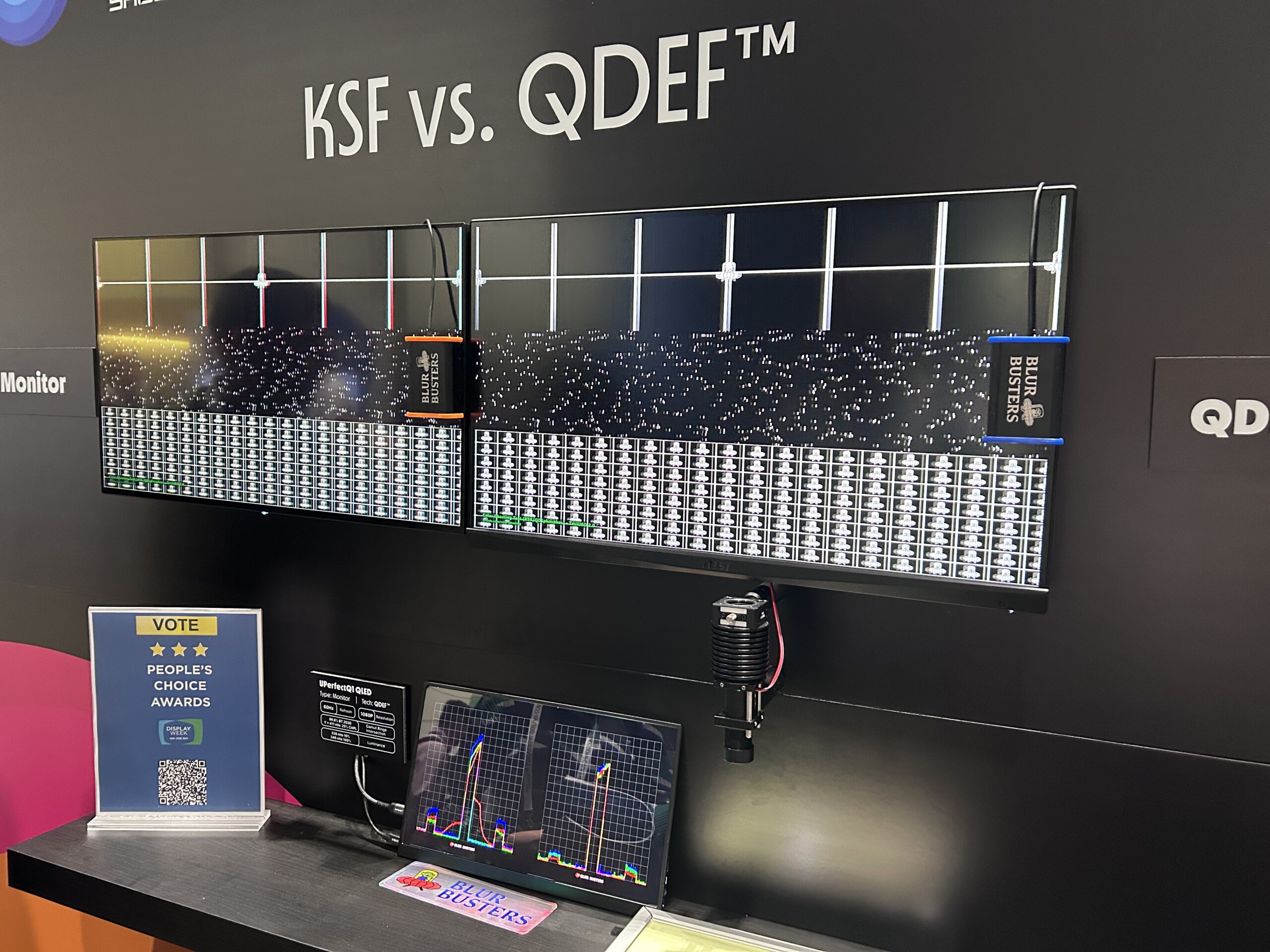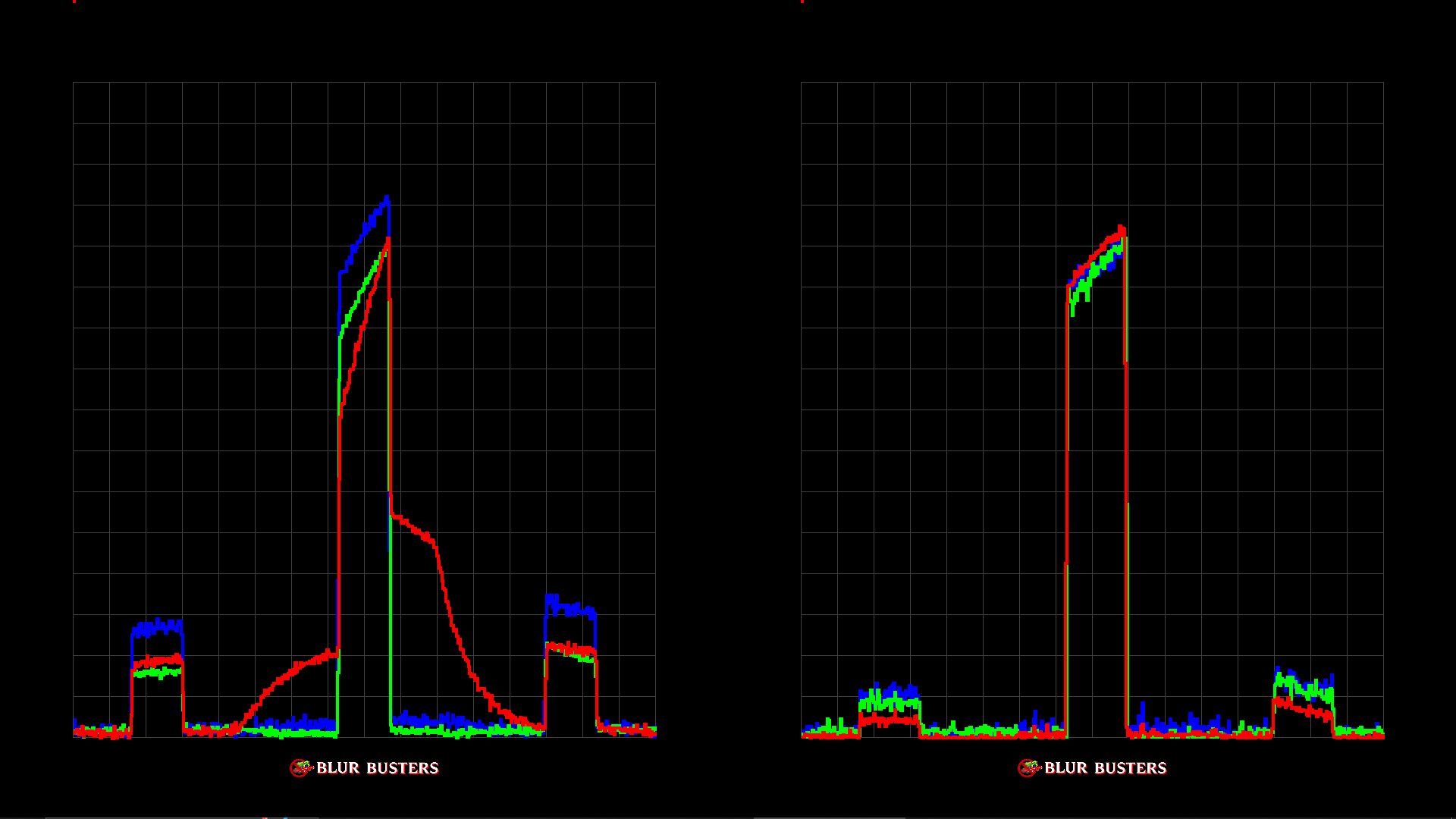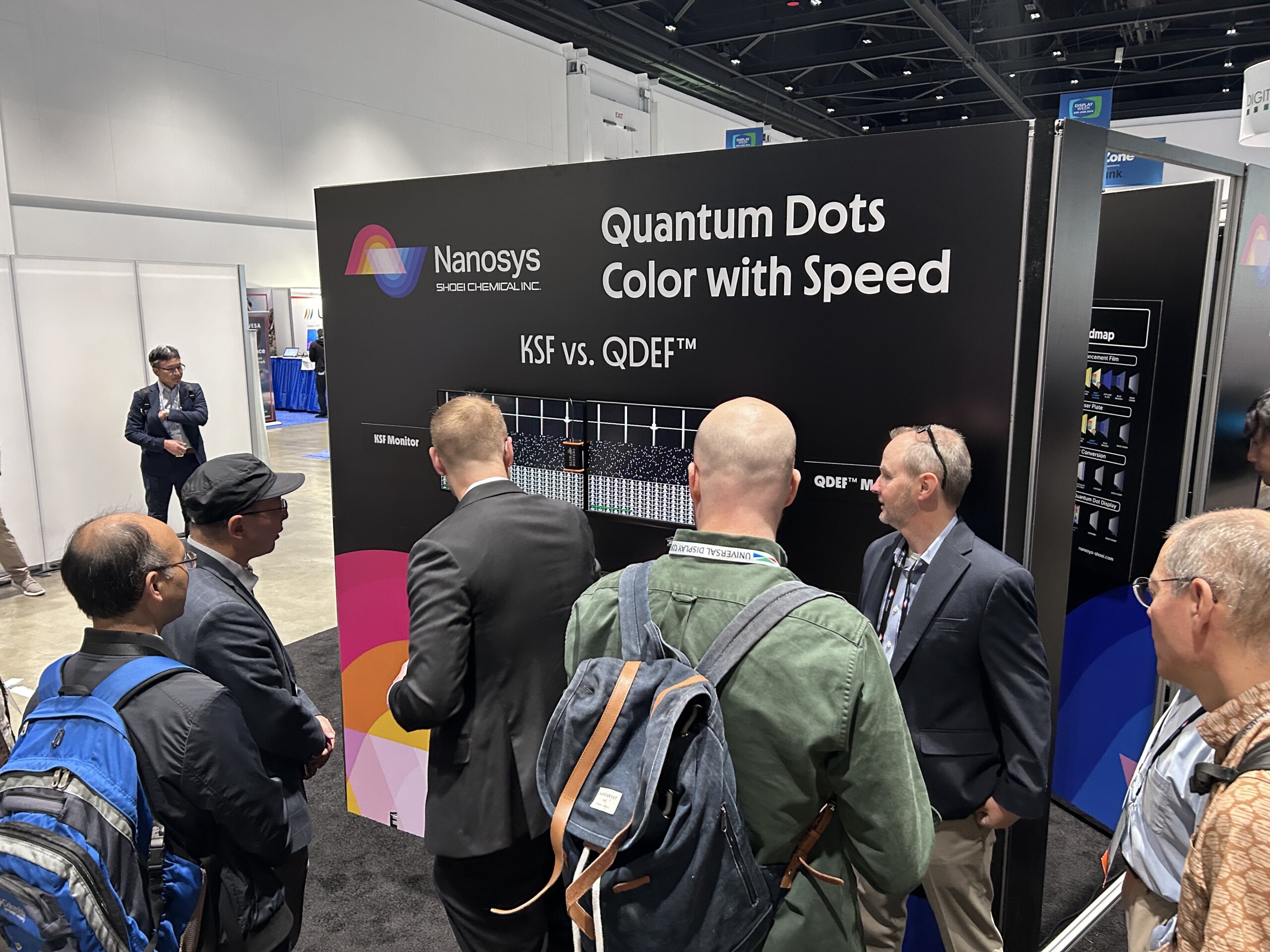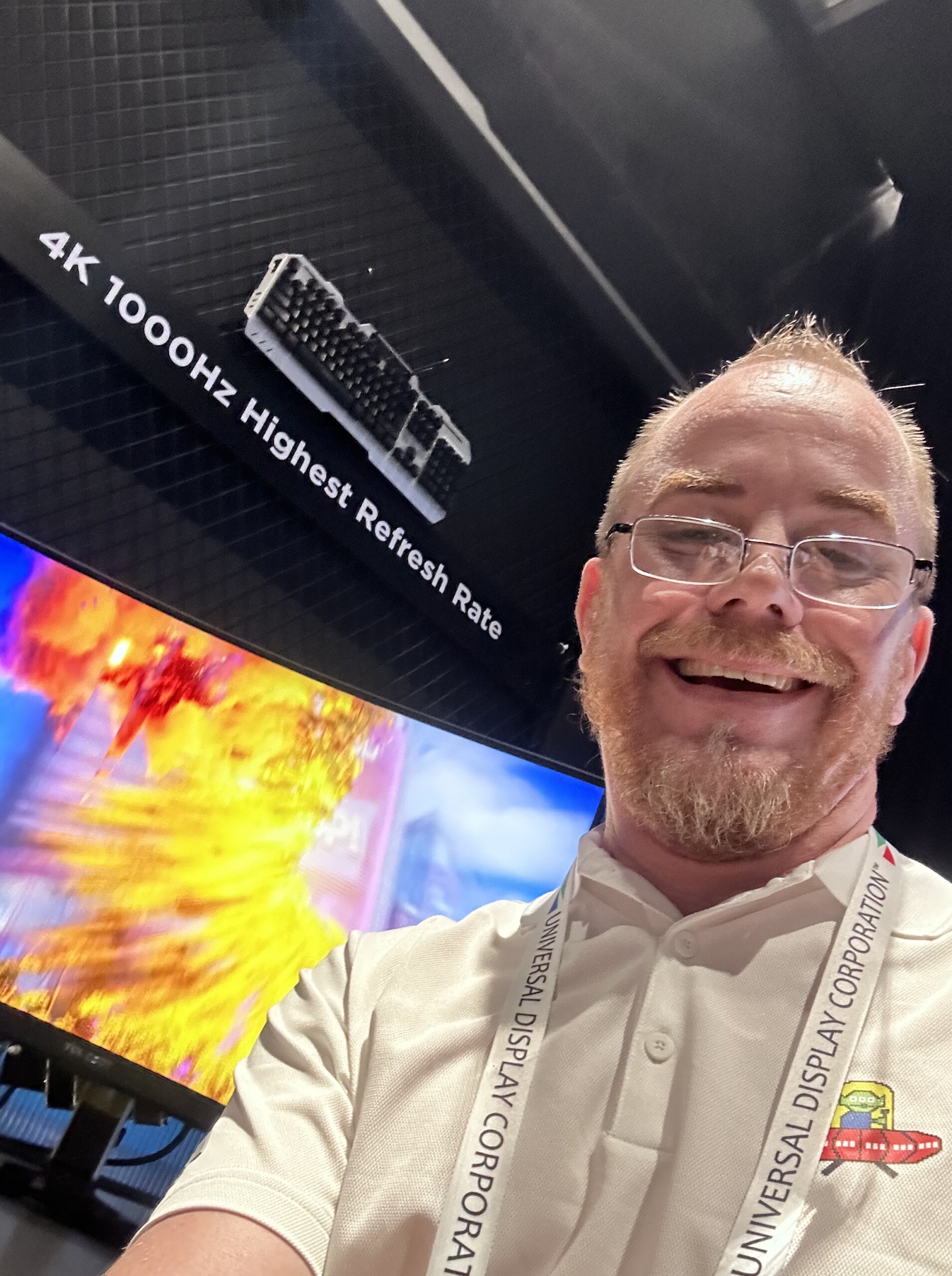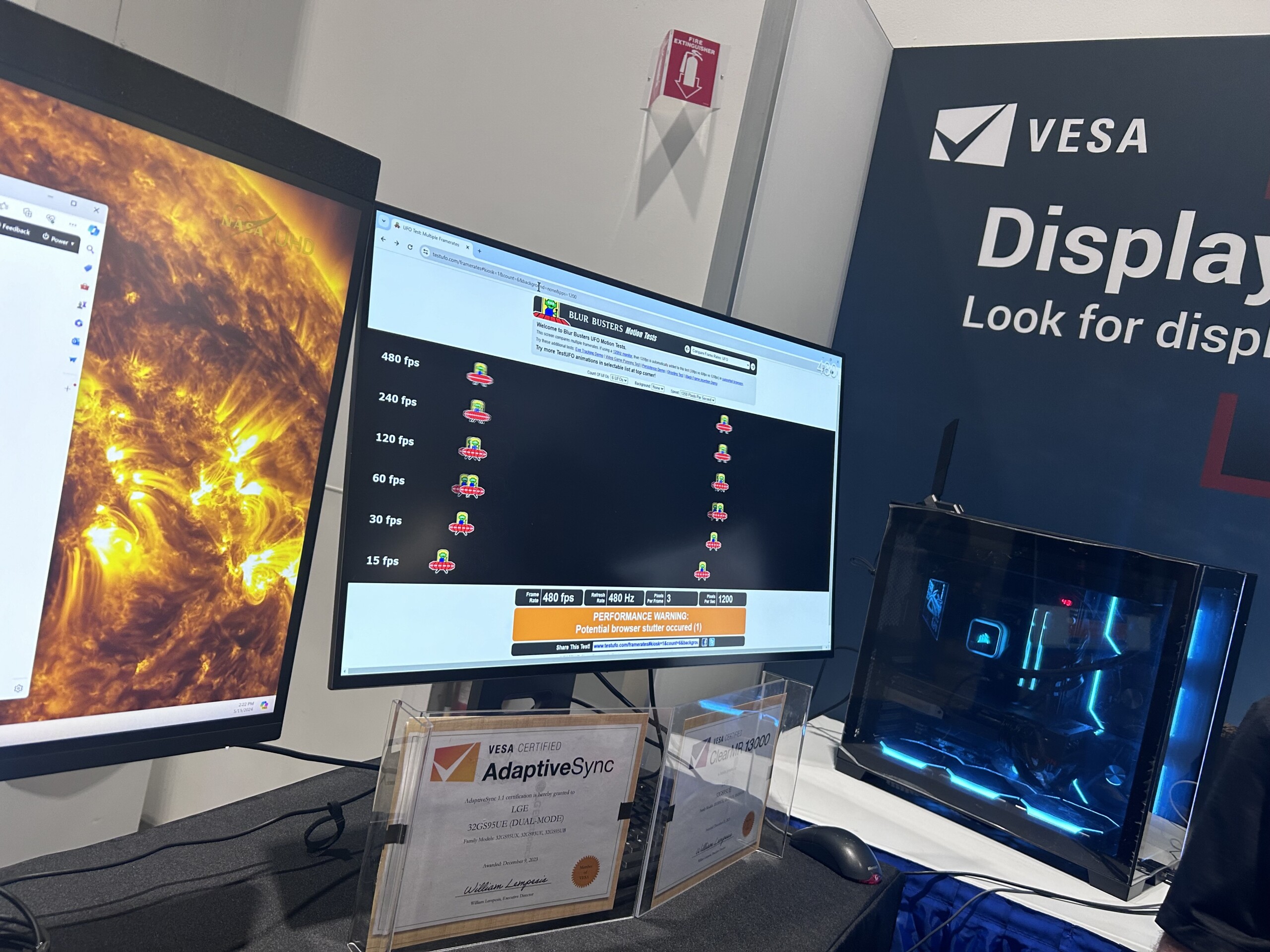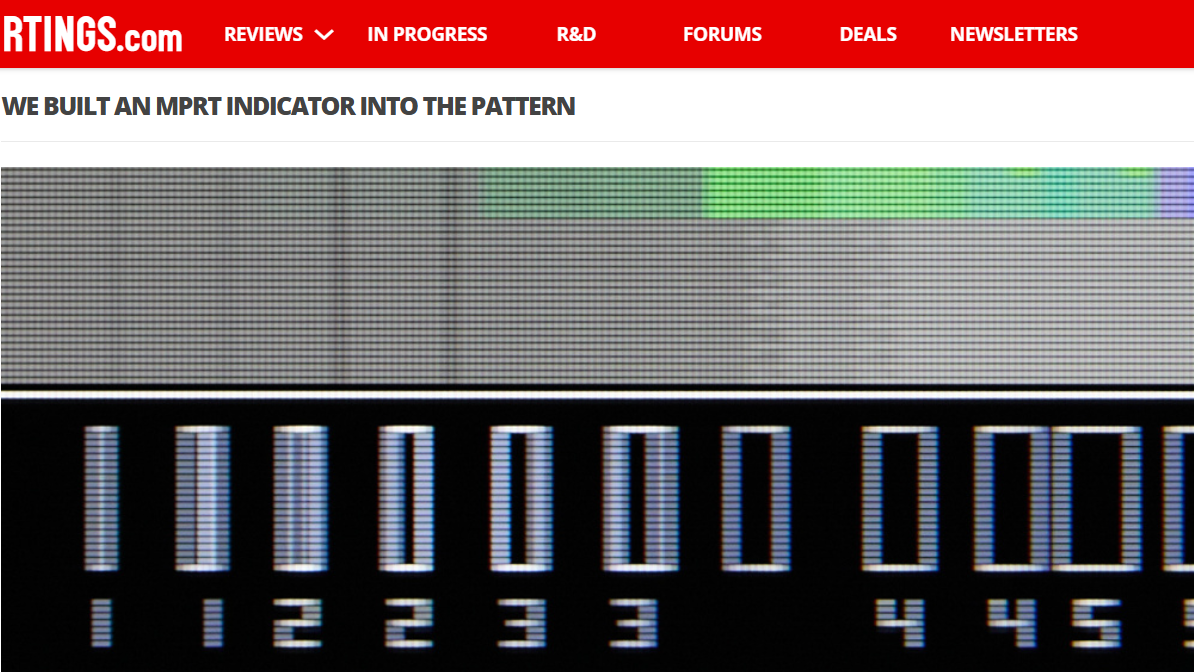DisplayWeek 2024 is in full swing, an annual gathering of industry insiders of the display manufacturing industry, including display components and display testing.
Even as the Blur Busters website has been slow to be updated (as of May 2024), Blur Busters has been super-busy behind the scenes! Here’s some eye candy:
Blur Busters Showing Display Tester Device at Nanosys Booth
Nanosys develops and manufactures quantum dots, for the latest displays on the market.
Recently, Nanosys and BlurBusters has been collaborating on testing. After our tester device was postponed by the pandemic, the Blur Buster Display Tester is now being resurrected. Nanosys and Blur Busters partnered to demo color performance testing, for the KSF red ghosting artifact.
We added color response performance testing to our Blur Buster Display Tester, to allow Nanosys to compare KSF and QD performance.
Nanosys is using our prototype Display Tester product, which we aim to commercialize in 2025.
Note: Blur Busters also offer consulting services to vendors in this sphere. Paid services to Blur Busters allows us to have an opportunity to improve the tester in preparation for its eventual commercial launch. Keep tuned for additional press on the Blur Busters Display Tester product. We also help other tester vendors improve their testing technologies, as well.
TCL Booth Showing Off 4K 1000Hz Screen
At the TCL CSOT booth, TCL was showing off a 4K 1000Hz screen! We had expected 1000 Hz to arrive, but we didn’t expect it to debut at the 4K resolution before 1080p and 1440p, so it is fantastic to go straight to 4K.
Higher resolutions amplify refresh rate limitations due to higher static resolution versus unchanged motion resolution (at the same MPRT persistence), so higher-resolution, wider-FOV, and higher-detail content have more human-visible benefits from 1000Hz.
LCD Won 1000 Hz Race, But OLED Not Far Behind
It appears that the LCD horse won the race to 1000 Hz, since this is an LCD. It is noteworthy that 1000 Hz OLEDs will be commercialized by 2027, possibly with prototypes announced before then.
Both LG and Samsung is exhibiting rapidly-escalating refresh rate gaming screens at their respective booths, with 360 Hz and 480 Hz OLEDs already on the market. Refresh rate improvement benefits are much more visible on OLED, as many have noticed 120-vs-480 Hz OLED is more mainstream human visible than 60-vs-120 Hz LCD.
Unlike mostly human-invisible refresh rate incrementalism (e.g. 240 vs 360), made worse by slow LCD pixel response, geometrics on near-0ms-GtG displays are where mainstream human-visible benefits are. 2x-4x increases in Hz and framerate, such as 120 vs 480, are more human visible.
To the point where 120fps becomes a defacto ergonomic accessibility feature to people who get motionsick from low frame rates. More research is needed on the ergonomic benefits of low and high frame rates for different people, as some Blur Busters fans get headaches on frame rates less than 120fps.
However, quadruple-digit frame rates on photorealistic UE5+ content will likely likely require upcoming lagless 10:1 frame generation to turn 100fps into 1000fps. Otherwise, GPUs risk falling severely behind display refresh rates.
240 Hz is No Longer Just For Esports
Using OLED instead of LCD amplifies refresh rate differences. 60-vs-120Hz is much more visible on OLED than LCD, and the same is true for refresh rates beyond 240 Hz.
So much, that even TechSpot says 240 Hz is much better than expected for office productivity work. Scrolling becomes 4x clearer than 60Hz, when it comes to 240Hz OLEDs that do not have a visible pixel response limitation. Modern OLEDs are now durable enough for mixed use scenarios including office + gaming.
The 240Hz refresh rate at 4K is much better than I was expecting for productivity work. Relative to the 144Hz LCD I was using, the combination of a higher refresh rate and faster response times makes this QD-OLED much nicer to use for everyday tasks. Especially when browsing the web and scrolling through text, the speed and refresh rate combination is noticeable and provides a smoother, clearer experience – so it’s not just gaming where you’ll benefit from a 240Hz refresh rate.
Many 240 Hz OLED desktop monitors now come with 3-year burn-in warranties. Blur Busters’ office full of 240Hz OLEDs have no burn-in despite running Visual Studio, Word, Excel, PhotoShop, and other productivity apps for hours.
Spoiler: TechSpot failed to burn in OLED.
BTW, TechSpot says 240Hz is good for office productivity too. We agree, 240Hz is no longer just for esports (when it comes to OLED)
"The 240Hz refresh rate at 4K is much better than I was expecting for productivity work. Relative to the… https://t.co/C5hMMCrxpL— Blur Busters (@BlurBusters) March 23, 2024
Even LCDs can degrade too, see RTINGS LCD Degradation as LCD isn’t of infinite durability either; we observe some of the media still omit mentioning LCD degradation when mentioning OLED burn-in risks, even as OLEDs have massively improved in longevity in recent years.
VESA Booth Shows off Blur Busters TestUFO on 480 Hz OLED
With the OLED refresh rate bullet train on a tear, vendors have often been using TestUFO motion tests to show off the benefits of 480 Hz. A pleasant surprise was seeing VESA using TestUFO to show off 480 Hz OLED, as part of their ClearMR demos:
Over the longer term, Blur Busters is evaluating the possibility of joining the VESA association as an official member. We have an interest in influencing future standards in motion blur measurement metric, expanding on previous work already done with manufacturers, including Blur Busters’ past work on 240 Hz LG WOLEDs.
Nontheless, it’s fantastic to see VESA finally starting to recognize the need to better synchronize indie testing needs (e.g. a simple metric like GtG and MPRT) and manufacturer marketing needs (e.g. ClearMR). W
RTINGS Staff Visiting DisplayWeek
Blur Busters had the opportunity to meet several members of RTINGS who was visiting DisplayWeek, and we have discussed the fantastic new RTINGS blur testing methodology that heavily utilizes Blur Busters research on Blur Busters Law and pursuit camera.
The creator of ApertureGrille was hired by RTINGS, and you can tell the influence of the fantastic SmoothFrog application in RTINGS’ new motion blur tests, some improvements which will also be found in upcoming TestUFO 2.0 once it reaches wider public testing as this year progresses.
Some of the innovations will also be backported to TestUFO 2.x over time, such as the brand new visual MPRT indicator capable of human-visible benchmarking of 0.25ms MPRT versus 0.5ms MPRT versus 1.0ms MPRT.
Benefits of such low MPRT numbers are now human-visible on strobed 4K+ displays, and will be visible as refresh rates soar to the 1000Hz+ territory. A similar pattern was already planned to replace the old (difficult) TestUFO MPRT test.
For more reading, check out the Blur Busters Research Portal.







